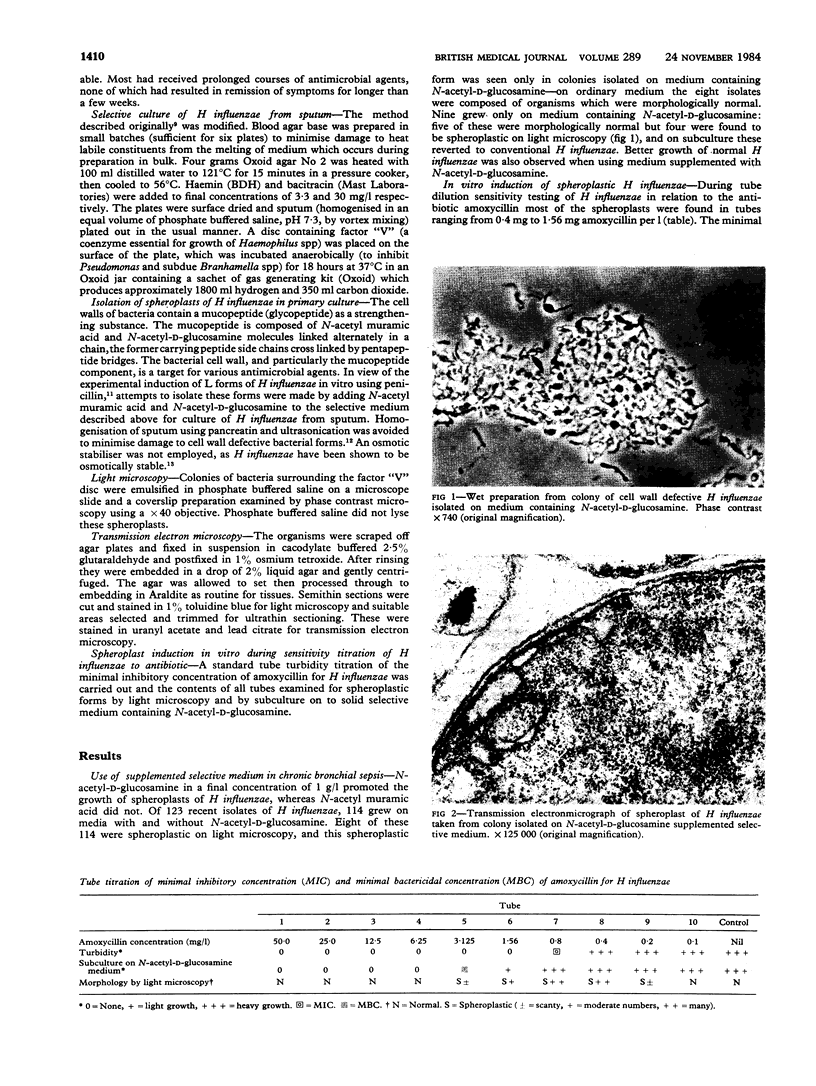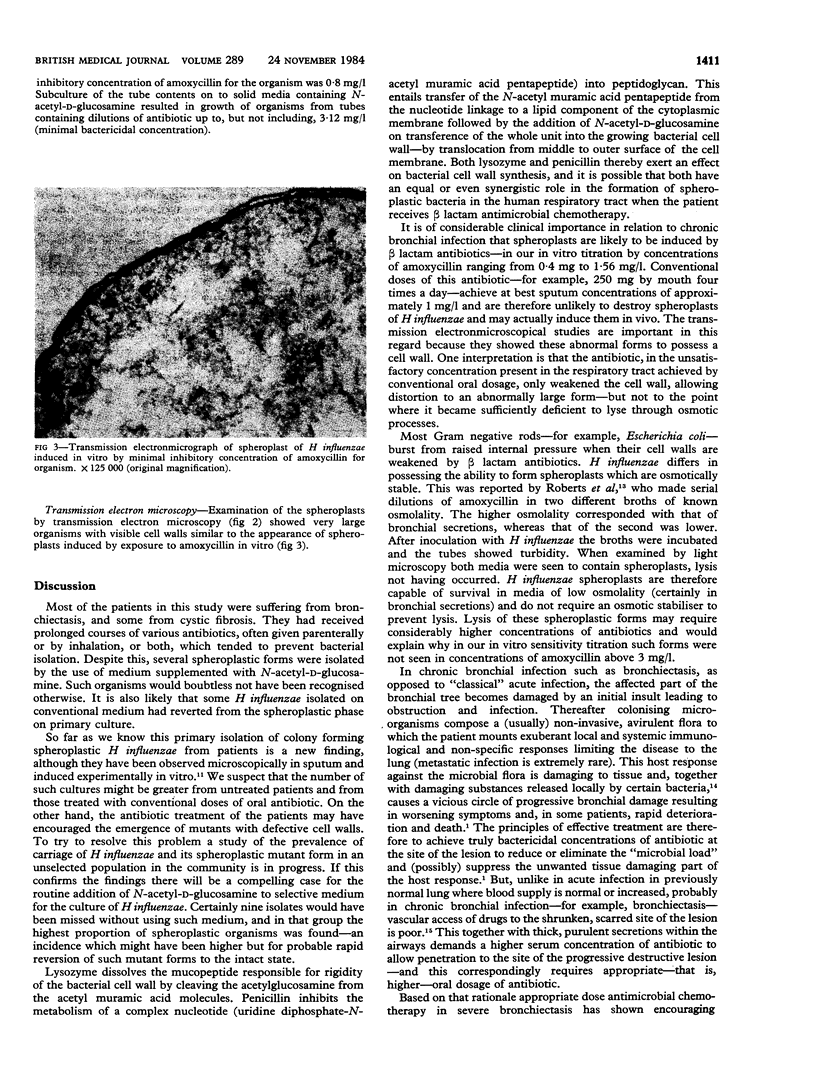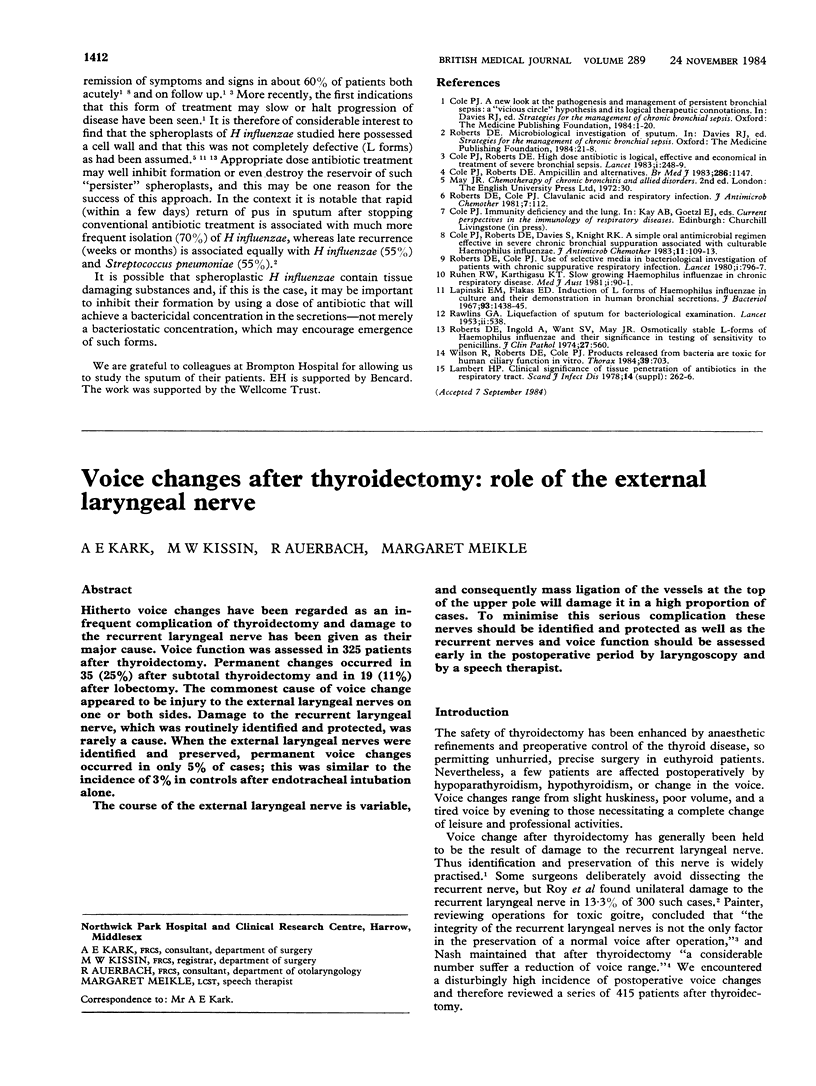Abstract
The isolation rate of Haemophilus influenzae from patients with persistent production of purulent sputum has been increased by the routine use of a selective medium. Nevertheless, some purulent sputum still fails to yield a pathogen. The selective medium was supplemented with N-acetyl-D-glucosamine to encourage primary isolation of colony forming, spheroplastic H influenzae, which reverted to normal forms on subculture. On the basis of in vitro experiments it is postulated that these spheroplastic forms of H influenzae may be induced by inadequate antimicrobial chemotherapy and may be responsible for re-emergence of symptoms in these patients during or shortly after stopping chemotherapy.
Full text
PDF



Images in this article
Selected References
These references are in PubMed. This may not be the complete list of references from this article.
- Cole P. J., Roberts D. E., Davies S. F., Knight R. K. A simple oral antimicrobial regimen effective in severe chronic bronchial suppuration associated with culturable Haemophilus influenzae. J Antimicrob Chemother. 1983 Feb;11(2):109–113. doi: 10.1093/jac/11.2.109. [DOI] [PubMed] [Google Scholar]
- Cole P., Roberts D. E. Ampicillin and alternatives. Br Med J (Clin Res Ed) 1983 Apr 2;286(6371):1147–1147. doi: 10.1136/bmj.286.6371.1147. [DOI] [PMC free article] [PubMed] [Google Scholar]
- Cole P., Roberts D. E. High dose antibiotic is logical, effective, and economical in treatment of severe bronchial sepsis. Lancet. 1983 Jan 29;1(8318):248–249. doi: 10.1016/s0140-6736(83)92629-6. [DOI] [PubMed] [Google Scholar]
- Lambert H. P. Clinical significance of tissue penetration of antibiotics in the respiratory tract. Scand J Infect Dis Suppl. 1978;(14):262–266. [PubMed] [Google Scholar]
- Lapinski E. M., Flakas E. D. Induction of L forms of Haemophilus influenzae in culture and their demonstration in human bronchial secretions. J Bacteriol. 1967 Apr;93(4):1438–1445. doi: 10.1128/jb.93.4.1438-1445.1967. [DOI] [PMC free article] [PubMed] [Google Scholar]
- May J. R., Roberts D. E., Ingold A., Want S. V. Osmotically stable L forms of Haemophilus influenzae and their significance in testing sensitivity to penicillins. J Clin Pathol. 1974 Jul;27(7):560–564. doi: 10.1136/jcp.27.7.560. [DOI] [PMC free article] [PubMed] [Google Scholar]
- RAWLINS G. A. Liquefaction of sputum for bacteriological examination. Lancet. 1953 Sep 12;265(6785):538–539. doi: 10.1016/s0140-6736(53)90275-x. [DOI] [PubMed] [Google Scholar]
- Roberts D. E., Cole P. Clavulanic acid and respiratory infection. J Antimicrob Chemother. 1981 Jan;7(1):112–112. doi: 10.1093/jac/7.1.112. [DOI] [PubMed] [Google Scholar]
- Roberts D. E., Cole P. Use of selective media in bacteriological investigation of patients with chronic suppurative respiratory infection. Lancet. 1980 Apr 12;1(8172):796–797. doi: 10.1016/s0140-6736(80)91295-7. [DOI] [PubMed] [Google Scholar]
- Ruhen R. W., Karthigasu K. T. Slow-growing Haemophilus influenzae in chronic respiratory disease. Med J Aust. 1981 Jan 24;1(2):90–91. doi: 10.5694/j.1326-5377.1981.tb135345.x. [DOI] [PubMed] [Google Scholar]





